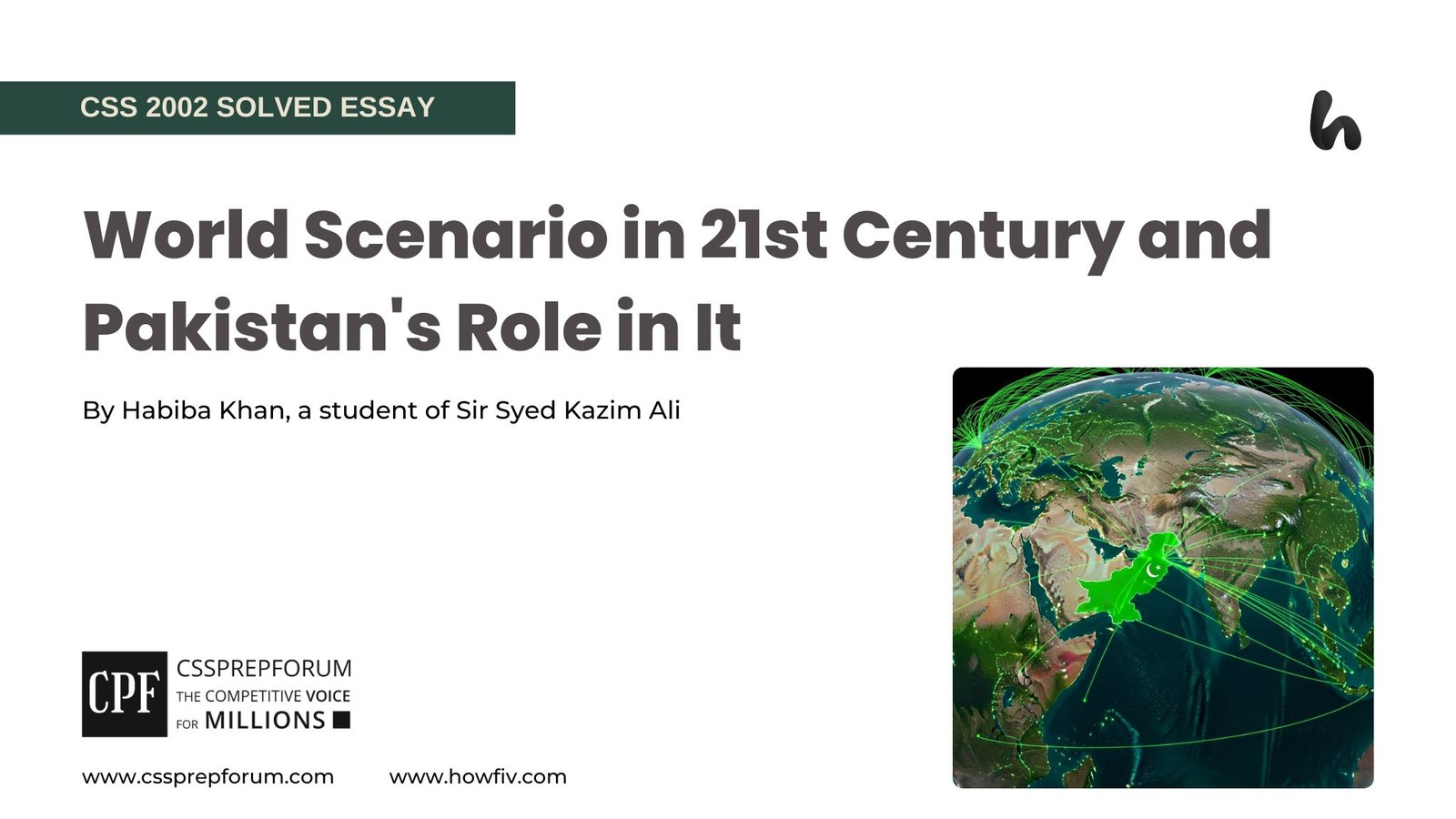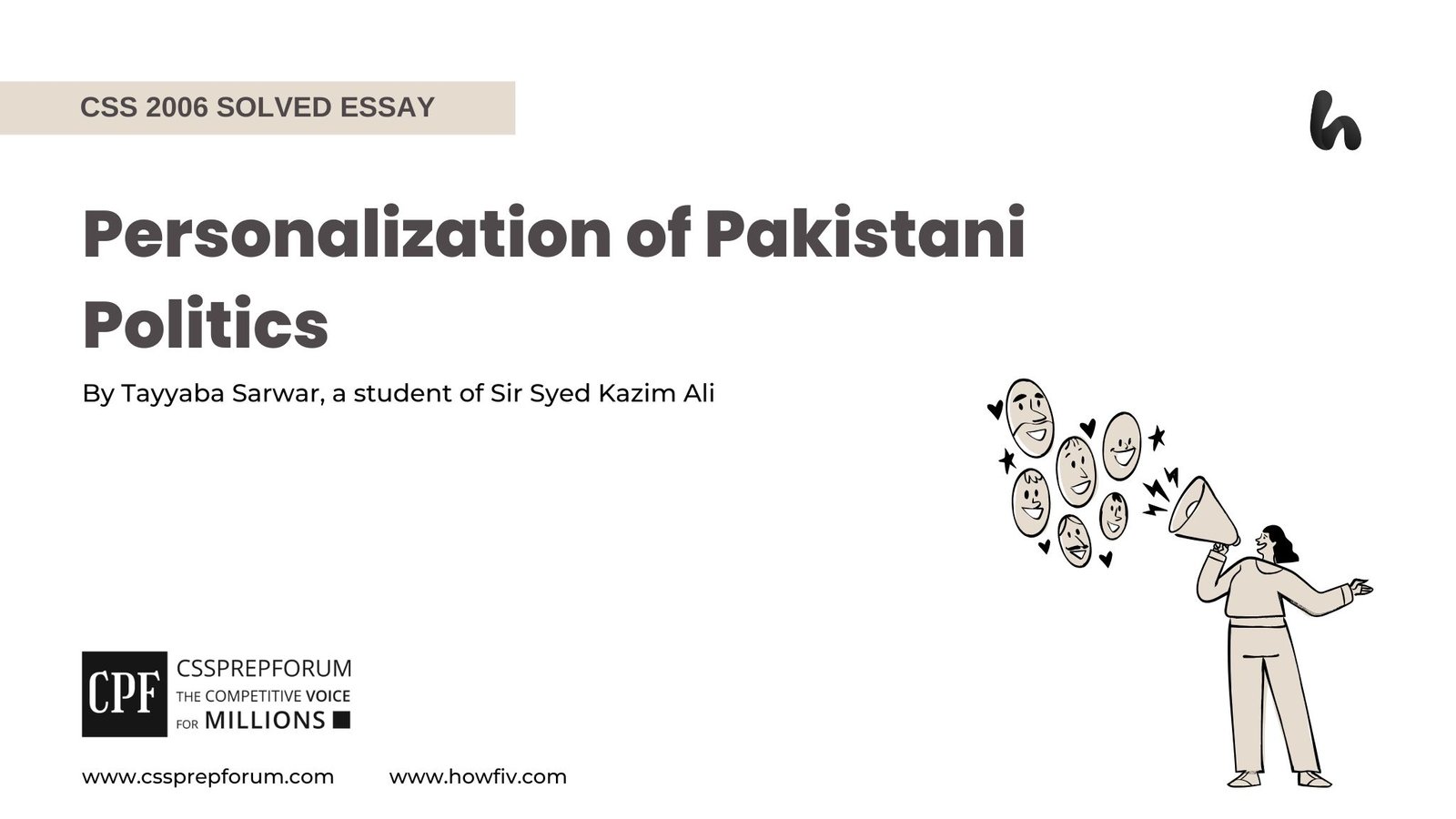CSS Current Affairs | The South China Sea Conflict and Global Trade
The following question of CSS Current Affairs is solved by Haleema Bibi under the supervision of Howfiv’s Pakistan Affairs and Current Affairs Coaches. She learnt how to attempt 20 marks question and essay writing from Sir Syed Kazim Ali, Pakistan’s best CSS and PMS English essay and precis teacher with the highest success rate of his students. This solved past paper question is attempted on the pattern taught by Sir to his students, scoring the highest marks in compulsory and optional subjects for years, and uploaded to help aspirants understand how to crack a topic or question, how to write relevantly, what coherence is, and how to include and connect ideas, opinions, and suggestions to score the maximum.

Outline
1- Introduction
2- Overview of the South China Sea conflict
3- Potential economic impacts of conflict
- ✓Disruption of critical shipping lanes
- Evidence: A blockade of Taiwan could cost the global economy $2.7 trillion in the first year.
- ✓Broader geopolitical tensions
- Evidence: According to the United Nations Conference on Trade and Development, the South China Sea had $3.37 trillion in transactions in 2016, representing 21%of the world’s total trade.
- ✓Increased shipping costs and delays
- Evidence: Diverting shipping around Australia would increase costs due to the longer distance and potential delays.
- ✓Reduces access to natural resources
- Evidence: Taiwan’s economy contracted by a third, Singapore’s economy fell by 22%, and Hong Kong, Vietnam, the Philippines, and Malaysia suffered from falls of between 10% and 15%.
4- Way forwards
- ✓Diplomatic efforts to maintain peace and stability
- ✓Collaborative resolutions to safeguard the future of international trade
- ✓Strengthening positive peace indicators
5- Conclusion

Answer to the Question
Introduction
The South China Sea is a critical maritime crossroad, with one–third of global shipping passing through it. Unfortunately, the region faces numerous overlapping territorial disputes, including China, Vietnam, the Philippines, Taiwan, Malaysia, and Brunei, increasing military tensions and raising security concerns. For instance, China currently claims over 80 per cent of the islands, while Vietnam claims entire sovereignty over the Paracels and Spratly Islands (Story, 2014). Undoubtedly, the economic impacts of a conflict in the South China Sea on global trade routes are significant and far-reaching problems, including disruption of critical shipping lanes, broader geopolitical tensions, and increased shipping costs and delays. The South China Sea conflict dates back to 1279, which was the time when China drew a territorial map of its influence. In the South China Sea, a military conflict would force shipping from Europe and Africa destined for Asia, the Middle East, and the US west coast to be diverted worldwide, but with dire effects on countries at the epicentre.
Potential economic impacts of conflict
- Disruption of critical shipping lanes
Disruption of critical shipping lanes is a significant potential impact of a South China Sea conflict. For instance, a blockade of Taiwan could cost the global economy $2.7 trillion in the first year. A conflict would close the Malacca Strait between Malaysia and Indonesia and stop all east-west passage between the Pacific and Indian Oceans through the South China Sea. Therefore, a conflict that damages these shipping lanes would force ships to take longer and more costly routes, leading to significant economic losses for countries in the region.
- Broader geopolitical tensions
The South China Sea is a hotspot for broader geopolitical tensions, impacting global trade routes. A conflict in the state could damage global trade flows, which could cause significant economic losses for countries around the globe. According to the United Nations Conference on Trade and Development, the South China Sea had $3.37 trillion worth of transactions in 2016, representing 21% of the world’s total trade. Therefore, disruptions to these trade flows could have far-reaching consequences, including reduced economic crises and potential global economic crises.
- Increased shipping costs and delays
The South China Sea is an important global trade route; undoubtedly, one-third of the world’s shipping passes through its water. However, conflict or disruption in this region can create significant economic consequences. For instance, diverting shipping around Australia would increase costs due to the longer distance and potential delays. Prolonged container shipping delays directly threaten global supply chains, raising the risk of delayed delivery of components. Therefore, higher costs and delays could impact food and energy security, especially in countries reliant on imports.
- Reduces access to natural resources
The South China Sea conflict also disrupts access to the region’s abundant natural resources, creating significant global economic problems. Taiwan’s economy contracted by a third, Singapore’s economy fell by 22%, and Hong Kong, Vietnam, the Philippines, and Malaysia suffered from falls of between 10% and 15%. Any interruption to the trade of these resources impacts global energy prices and supplies. Therefore, a prolonged conflict in the South China Sea has reduced access to critical natural trade routes.
Way forwards to deal with the conflict
- Diplomatic efforts to maintain peace and stability
Maintaining stability and peace in the South China Sea is essential for preserving global economic prosperity. Diplomatic efforts to resolve disputes over territorial claims. Moreover, continued compromise and dialogue are the solutions to maintain peace and stability. Therefore, achieving peace would increase trade, investment and growth.
- Collaborative resolutions to safeguard the future of international trade
Moreover, enhancing collaborative resolutions is an important key factor in managing conflict between countries. Similarly, diplomatic efforts to establish a code of conduct and promote peaceful dispute resolution mechanisms in the region. Therefore, countries can ensure the continued flow of goods and services globally by working together to safeguard the future of international trade.
- Strengthening positive peace indicators
Strengthening positive peace indicators is crucial for fostering cooperation among applicant countries. Moreover, establishing peaceful negotiations can help maintain stability. Peace indicators include successful bilateral and multilateral agreements. Therefore, these measures can improve the uninterrupted flow of trade and increase economic stability around the globe.
Conclusion
In short, the South China Sea conflict shows crucial economic threats to global trade routes, potentially leading to disruptions of the supply chain, increased shipping costs and delays, and broader geopolitical tensions. These challenges can be underscored through diplomatic efforts to maintain peace and stability and strengthen positive peace indicators, which are important for global trade and economic prosperity.

CSS Solved Past Papers’ Essays
Looking for the last ten years of CSS and PMS Solved Essays and want to know how Sir Kazim’s students write and score the highest marks in the essays’ papers? Then, click on the CSS Solved Essays to start reading them.
CSS Solved Essays
CSS Solved General Science & Ability Past Papers
Want to read the last ten years’ General Science & Ability Solved Past Papers to learn how to attempt them and to score high? Let’s click on the link below to read them all freely. All past papers have been solved by Pakistan’s top CSS GSA coach having the highest score of their students.
General Science & Ability Solved Past Papers












